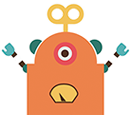Ask Singapore Homework?
Upload a photo of a Singapore homework and someone will email you the solution for free.

Question
junior college 1 | H2 Maths
One Answer Below
Anyone can contribute an answer, even non-tutors.

Having trouble with this question.
For part (a),
When they mean maximum and minimum, it implies that we have to set dy/dx = 0 right?
I cant seem to solve dy/dx = 0..
Afterwards, we use the 1st Derivative Test to check whether the value is a max or min?
For part (b),
Im assuming we have to use d2y/dx2 = 0? As we are looking at the rate of the decrease and it is neither speeding up nor slowing down.
Thank you
Since dy/dx is a constant, then d²y/dx² = 0
See 1 Answer






